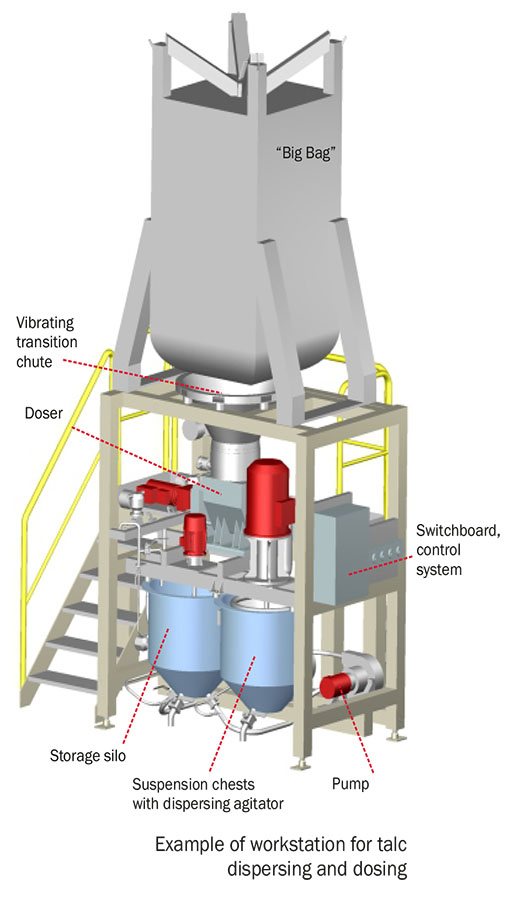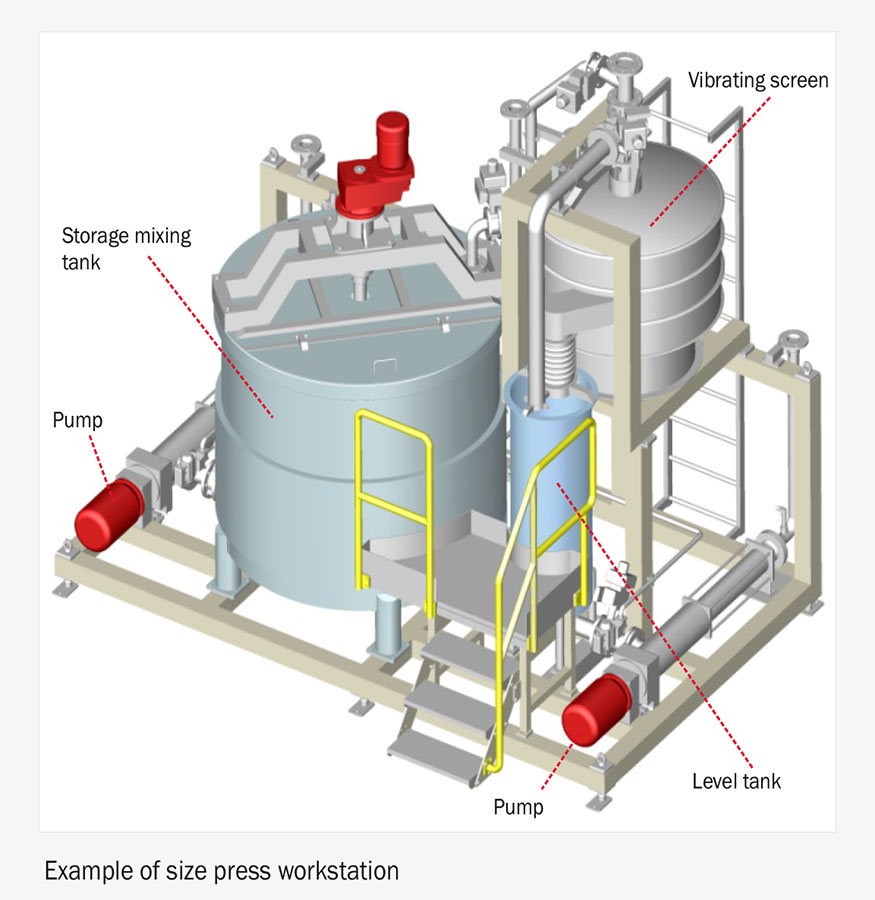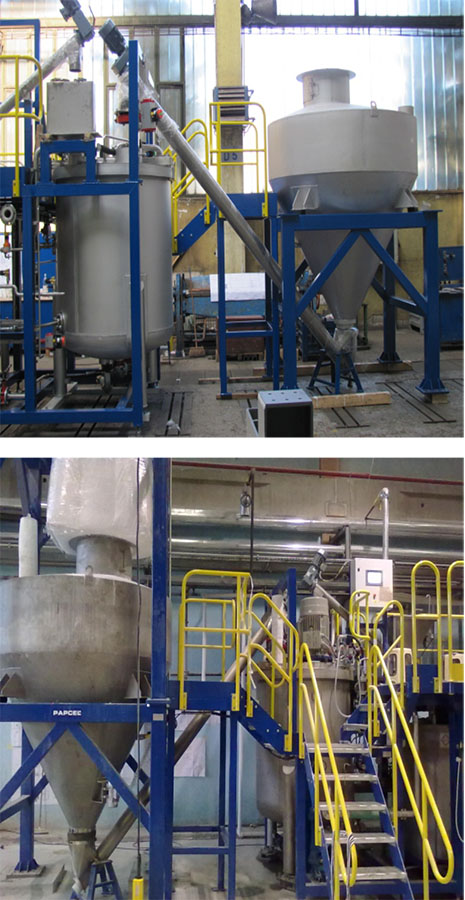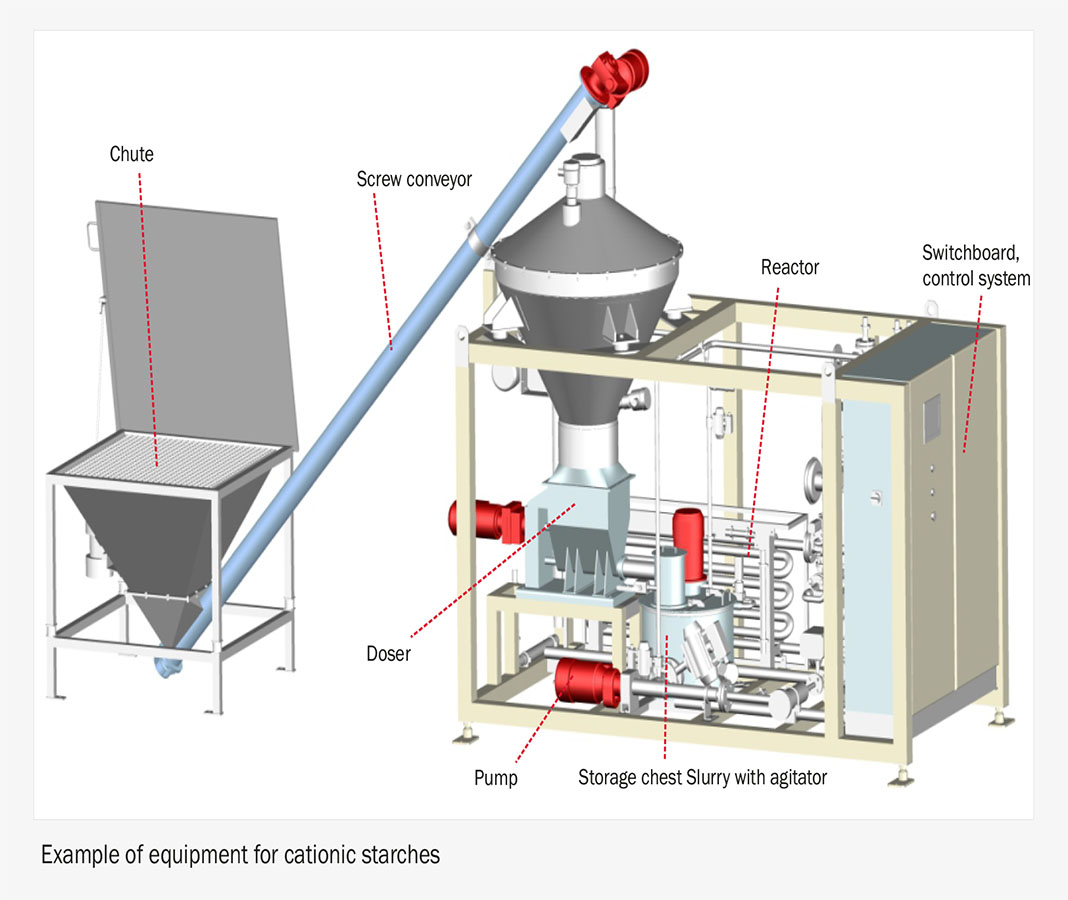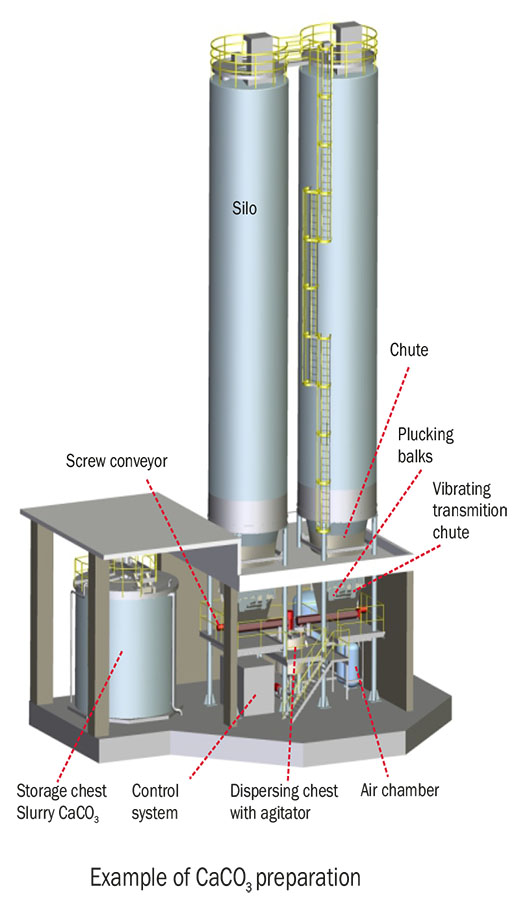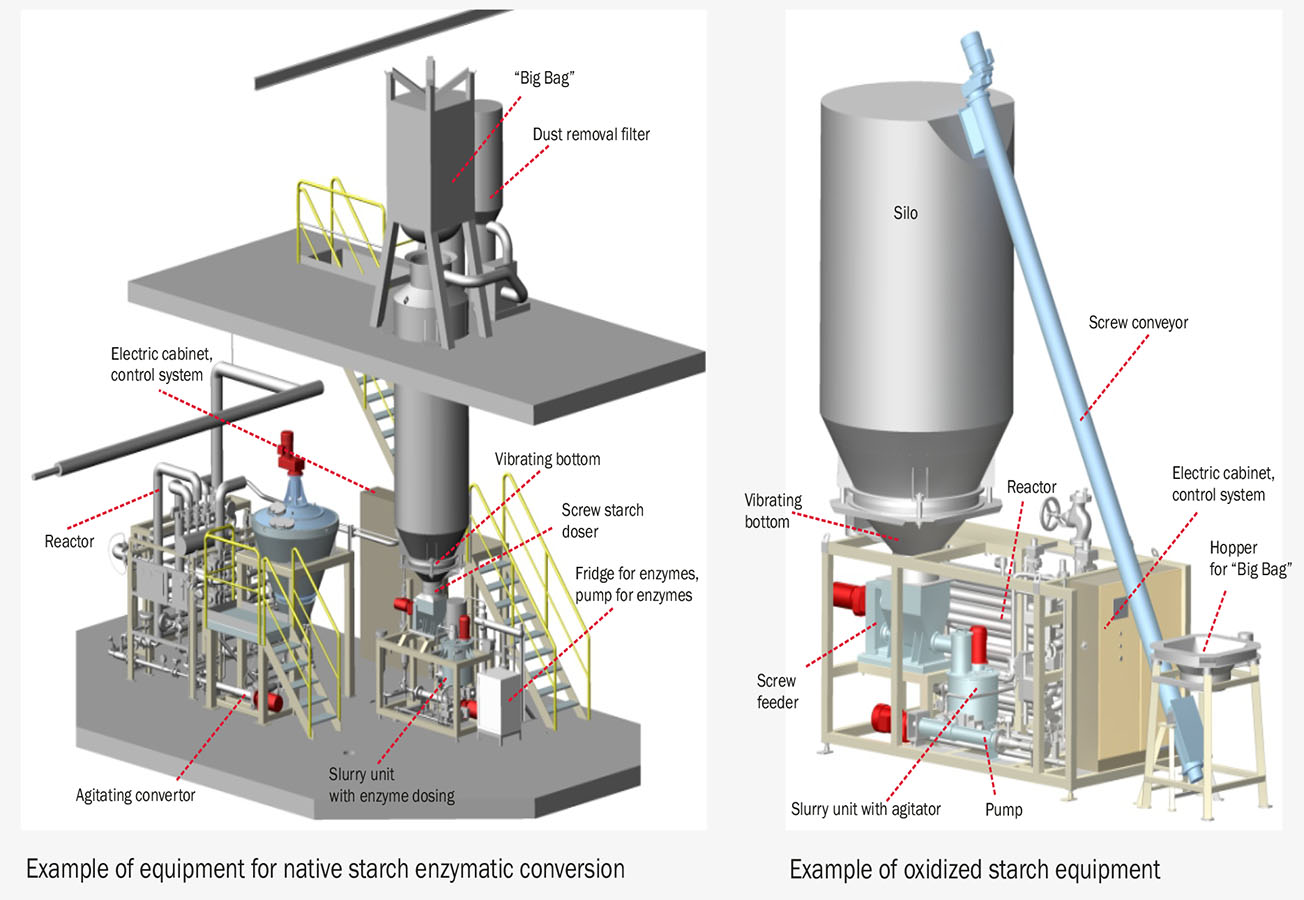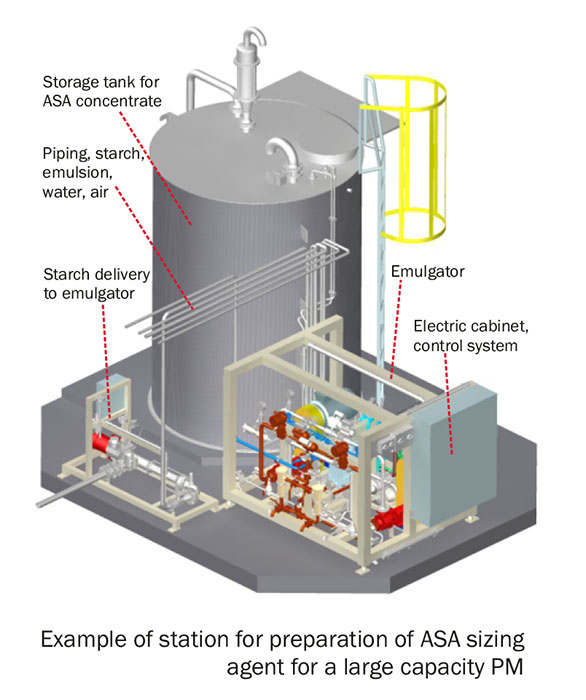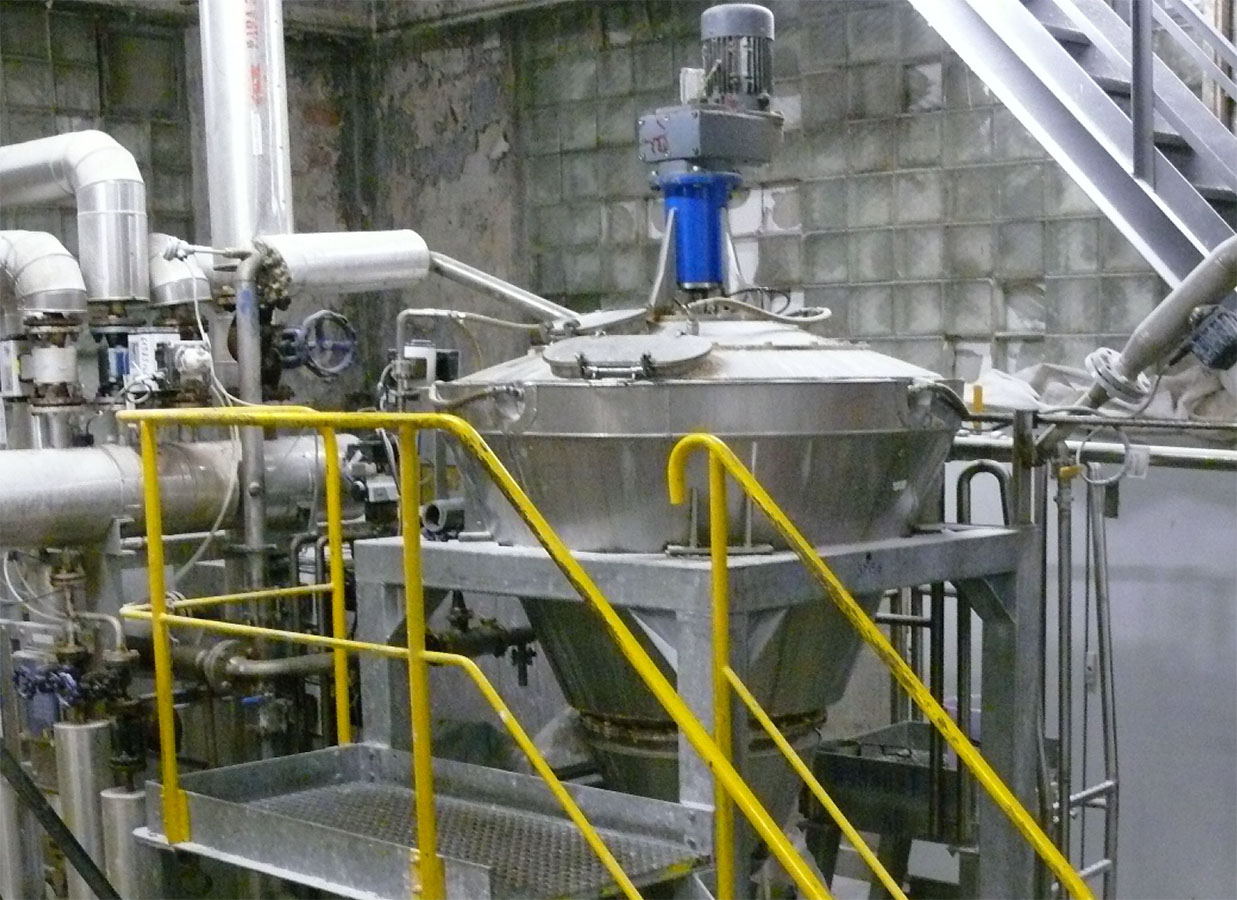Chemicalization Of Paper Machines
Fillers
Fillers (pigments, filling agents) are insoluble particles filling empty places in paper structure; furthermore they are used to colour paper and to increase opacity. Pigments are added into pulped stock or coating mixtures. Generally they improve paper printability. They are sorted out in organic and inorganic ones and also by their chemical composition. They are for example limestone (calcium carbonate CaCO ), titanium white (titanium 3 dioxide TiO ), china clay (kaolin), talc (soap- 2 stone), barite (barite, blanc fixe, barium sulphate BaSO ) and others. Conserving and 4 plasticizing admixtures are used to stabilize liquid fillers.
Sizing agents
Sizing agents (sizes) improve paper resistance to water. They are added into stock or spread on paper surface in size press. Sizing agents are modified natural rosins or synthetic substances, for example AKD (alkyl ketene dimer), ASA (alkenyl succinic anhydride), styrene-acrylate based compounds.
Starch
They improve creating interfibrous bonds, paper and board dry strength, and they decrease printing surface dusting. They are made from potatoes, wheat, corn etc. Starch is sorted out in:
- Mass-dosed – cationic starch
- Surface-spread – oxidized or native starch,
the latter to be treated by means of enzymatic or thermo chemical conversion
Native – non-modified starch
To be spread onto paper surface in size press. They are the cheapest; potato, corn or wheat native starch is usually used. They are modified by means of enzymatic conversion (enzyme-treating starch in a continuous reactor to cut starch molecule chains) or by means of thermo chemical conversion (the starch molecules are cut by means of oxidizing agents). The equipment preparing starch for further use is generally called jet cookers
Cationic – modified starch
To be dosed in stock. The cationic charge increases capacity of starch absorption in cellulose fibres.
Oxidized
Oxidation in a starch plant is the most frequent way of starch molecule degradation. The oxidized starch sorts are spread onto paper surface in size press. They are also used as a base to prepare adhesives for box making.
Retention agents
The aim of using retention agents is to catch as much input raw material as possible on the paper machine wire and to speed up dewatering. They improve white water quality. They are made of liquid or powder products. The retention agent dosing systems are designed as single-, double- or triple component ones. The retention systems consist of:
flocculants : substances speeding up creating floccules
coagulants: substances supporting floccule precipitation
bentonite: used as one part of multi component retention systems or to clean effluents polluted by oil products, emulsions, color colloids or heavy metals
JC, TCC, EKK starch cookers technical data
Starchsort: native or oxidized (cationic)
Starch origin: potato, corn, wheat, tapioca
Starch cooking: oxidized, cationic – continuous cooking in JC cookers
native thermo chemical conversion using oxidants in TCC cookers
Filling cookers: native – enzymatic conversion in EKK cookers from paper sacks or “Big-Bags” directly into a cooker
hopper (compact cooker)
from a small- or large-volume silo (divided cooker)
Cooker design: compact – all the components installed in a support
frame divided – the slurry unit installed separately from the cooking unit, above all for TCC or EKK cookers filled from large volume silos.
Oxidant sort: ammonium or potassium persulphate
Enzyme sort: α (alpha) – amylase
Cooking time: JC cookers – 2 minutes, TCC cookers – 4 minutes
Conversion time: EKK cookers – 20 minutes conversion + 2 minutes enzyme inactivation
Viscosity control: on customers’ demand for TCC and EKK cookers
Cooker capacities: JC cookers – 50 to 1,000 kg/hr
TCC and EKK cookers – 350 to 3,000 kg/hr
Slurry concentration: up to 30 % for oxidized and native starch
up to 12 % for cationic starch
Output concentration: adjustable as per the process requirements,
– for oxidized and native starch 6 up to 15 %
– for cationic starch 1 up to 4 %
Electric grid: 3x 400 VAC/50 Hz or 60 Hz
Rated power input: 5 – 36 kW
Fresh water: no mechanical impurities, pressure min. 3 bar
Instrument air: pressure min. 5 bar, dew point -20°C
Saturated steam: 4 – 5 bar abs
Dyes and optical brightening agents
Dyes are intensively coloured organic compounds soluble in water or other solvents. They are used to achieve a required colour shade. Mass or surface dyes are used; the latter applied in size press. Optical brightening agents (OBA) are utilised to improve light reflectivity. They are colourless or slightly coloured, water soluble. They are applied in stock or on surface in size press.
Biocides
They are used to kill, suppress or prevent a growth of bacteria and other microorganisms arising in various places of paper making machinery. The most frequent occurrence of bacterial cultures is on the walls of tanks, machines and pipelines where they create slime deteriorating water quality and possibly causing paper breaks.
Defoaming agents
Used to suppress creating foam. Applied into stock or into starch solutions and coating mixtures.
Pitch control
Agents used to catch and separate free rosin and other undesirable matter in stock able to stick on various machinery parts like doctors, dewatering blades, paper machine clothing and others. E.g. talc is often used
Coating mixtures
They are used for surface coaters. Generally they are composed of pigments, adhesives, binders, OBAs, dyes, dispergators and pH control agents. They significantly improve paper surface properties, above all of the printing papers.
Emulsifiers
Agents used to prepare emulsions, i.e. reducing an inter phase tension. They are used e.g. for preparing oil-in-water“ type emulsions
pH controllers
They are used for pH-control of coating mixtures or to optimise functions of auxiliary papermaking agents in stock. If caustic soda (sodium hydroxide, NaOH) solution is used, it must be heated by means of steam or electric heaters to prevent recrystallization. Other pH controllers are alum [aluminium sulphate,Al (SO ) .xH O), sulphuric acid (H SO ), 2 4 3 2 2 4 polyaluminium chloride (Al (OH) Cl , PAC) n m 3n-m and other
Binders
They bind and connect pigment particles one to another and connect the pigment particles to paper surface. Usually used in coating and sizing mixtures. Sorted out in natural and synthetic binders, e.g. starch, casein, polyvinyl alcohols (PVA), acrylates, latexes and others.
Other auxiliary chemicals
- Fixative agents like PAC – improving retention, fixing chemicals, purifying process water and effluents
- Cleaning agents – for continuous chemical cleaning felts
- WSR (water strength resins) – imparting to paper mechanical resistance to water or humidity (synthetic resins based on PAE (polyamido-amine-epichlorohydrin), UF (urea-formaldehyde and others)
-
Category
Uncategorize Length
12 feetWidth
6 feetHeight
10 feetWeight
580 kgSpace Require
14 sq. feet
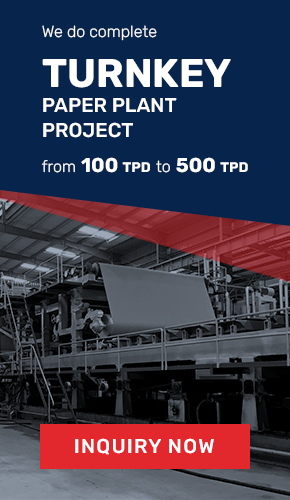
Company Presentation
[elementor-template id="3268"]
